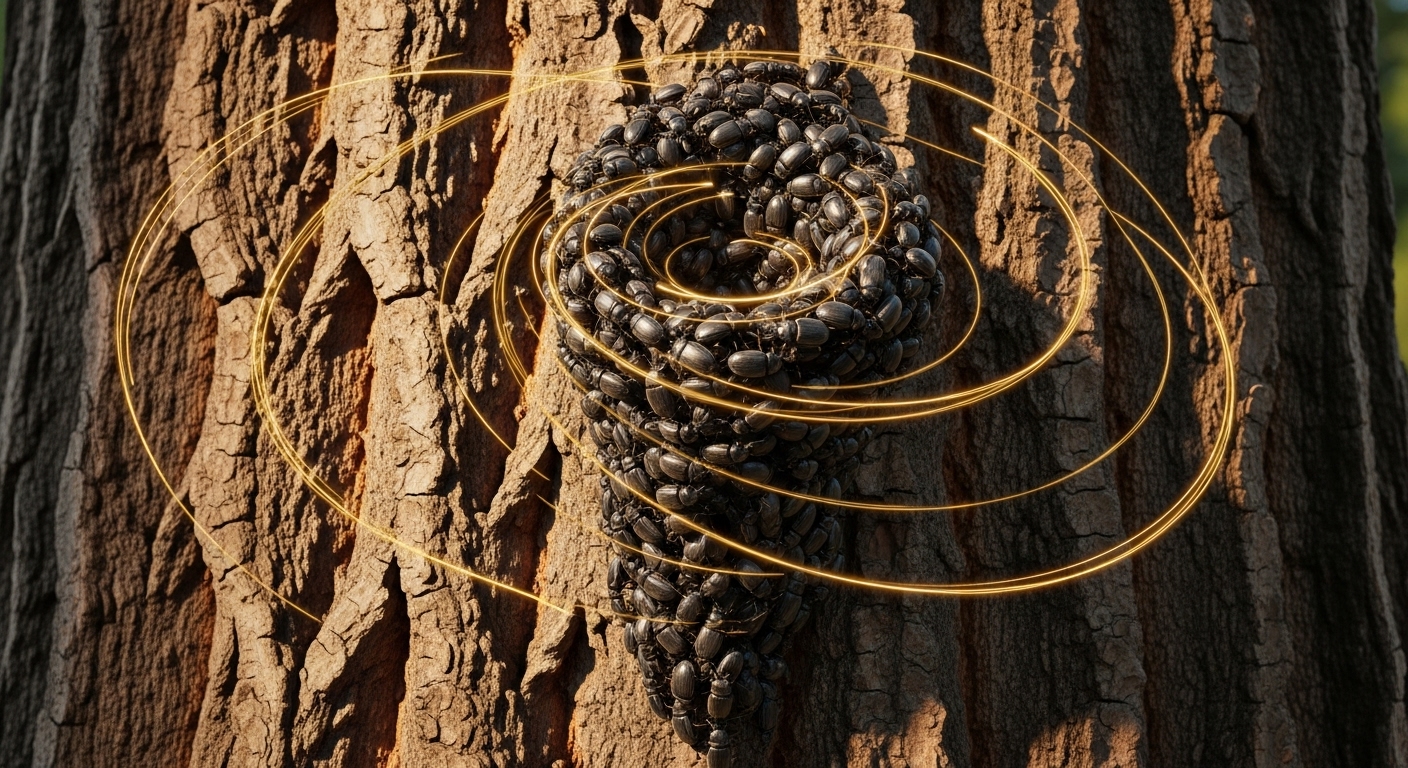Abstract: Aggregation pheromones are a class of chemical signals that promote the mass clustering of conspecifics at a particular location. Unlike sex pheromones, which are strictly heterosexual attractants, aggregation pheromones attract both sexes and are crucial for coordinating group activities, such as feeding, defense, and overcoming host resistance. This article highlights the function of these pheromones, with primary examples drawn from the highly successful life strategies of bark beetles.
Function in Pest and Social Species
Aggregation pheromones are semiochemicals that result in the coming together of individuals, leading to a temporary “mass attack” (Wyatt, 2003). They serve several vital, non-sexual purposes:
- **Defense and Overcoming Host Resistance:** In bark beetles (e.g., *Dendroctonus* species), an initial colonizing beetle releases an aggregation pheromone. The mass arrival of subsequent beetles overwhelms the tree’s defensive resin production, allowing the group to successfully bore and reproduce (Wood, 1982).
- **Enhanced Feeding:** In many insects, gathering in large numbers facilitates food processing or detoxification, increasing the overall efficiency of resource exploitation.
- **Mating Coordination:** While they are not sex pheromones, the resulting aggregation of both sexes at a central point ensures a high density of potential mates, facilitating reproductive success (Wyatt, 2003).
Case Study: The Bark Beetle Pheromone Cascade
The chemical ecology of the mountain pine beetle provides a classic example of an aggregation pheromone system. The initial beetle releases a compound (often a terpene alcohol like **exo-Brevicomin**) as it bores into a tree. As the population density at the tree increases, secondary compounds are released that act as **anti-aggregation pheromones**, signaling to late-arriving beetles that the host is fully saturated or chemically defended, causing them to divert to a new host (Borden, 1985). This sophisticated chemical cascade efficiently controls both the initial attack and the ultimate dispersal of the population.
Application in Pest Management
Similar to sex pheromones, aggregation pheromones are highly utilized in agriculture and forestry. Synthetic pheromones are deployed for:
- **Mass Trapping:** Luring vast numbers of beetles into traps to reduce the population.
- **Baiting:** Attracting insects to specific targets for enhanced chemical or biological control.
The study of aggregation pheromones is crucial not only for understanding insect social behavior but also for developing sustainable, targeted approaches to pest management, replacing broad-spectrum insecticides with highly specific chemical lures.
References
Borden, J. H. (1985). Aggregation pheromones. In G. A. Kerkut & L. I. Gilbert (Eds.), *Comprehensive Insect Physiology, Biochemistry and Pharmacology* (Vol. 9, pp. 257–286). Pergamon Press.
Karlson, P., & Lüscher, M. (1959). “Pheromones”: a new term for a class of biologically active substances. *Nature*, 183, 55–56. [Contextual reference for pheromone definition]
Wood, D. L. (1982). The role of pheromones, kairomones, and allomones in the host selection and colonization behavior of bark beetles. *Annual Review of Entomology*, 27(1), 411–446.
Wyatt, T. D. (2003). *Pheromones and Animal Behavior: Communication by Smell and Taste*. Cambridge University Press.


Leave a Reply